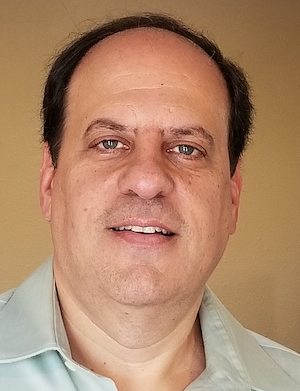 We live in a world where bigger is better. Our phones are getting bigger. Our televisions are getting bigger. Our biggest companies are getting bigger (at least if they are in tech). Our cars, especially SUVs, are getting bigger. Our houses are getting bigger. And, in healthcare, our hospitals are getting bigger, our physician practices are getting bigger, our health insurers, pharmaceutical companies, and medical device manufacturers are all getting bigger. It's time to question whether any of this is good.
We live in a world where bigger is better. Our phones are getting bigger. Our televisions are getting bigger. Our biggest companies are getting bigger (at least if they are in tech). Our cars, especially SUVs, are getting bigger. Our houses are getting bigger. And, in healthcare, our hospitals are getting bigger, our physician practices are getting bigger, our health insurers, pharmaceutical companies, and medical device manufacturers are all getting bigger. It's time to question whether any of this is good.
Feature Articles
Medicity's CEO's Thoughts on Interoperability
 Last week I had the esteemed privilege of attending the EHR Interoperability Meeting at the White House with Seema Verma, CMS Administrator, and Don Rucker MD, National Coordinator at ONC. The attendees represented payer organizations, and the discussion was focused on the barriers to interoperability and how we can band together to overcome them. Below are my responses to the major questions asked of each payer. As you read through this information, I hope it further clarifies our position on these topics.
Last week I had the esteemed privilege of attending the EHR Interoperability Meeting at the White House with Seema Verma, CMS Administrator, and Don Rucker MD, National Coordinator at ONC. The attendees represented payer organizations, and the discussion was focused on the barriers to interoperability and how we can band together to overcome them. Below are my responses to the major questions asked of each payer. As you read through this information, I hope it further clarifies our position on these topics.
The Heritage and Legacy of M (MUMPS) – and the Future of YottaDB
 In computing, the term legacy system has come to mean an application or a technology originally crafted decades ago, one important to the success of an enterprise, and which at least some people consider obsolete. But age alone does not make something obsolete – we still read and appreciate Shakespeare a half-millenium after his death, and paper clips from over 100 years ago are still familiar to us today, We must recognize that software is also part of our technical and cultural heritage (see Software Heritage). As in much else in our daily lives, legacy and heritage are intertwined.
In computing, the term legacy system has come to mean an application or a technology originally crafted decades ago, one important to the success of an enterprise, and which at least some people consider obsolete. But age alone does not make something obsolete – we still read and appreciate Shakespeare a half-millenium after his death, and paper clips from over 100 years ago are still familiar to us today, We must recognize that software is also part of our technical and cultural heritage (see Software Heritage). As in much else in our daily lives, legacy and heritage are intertwined.
A Better Marketing Plan for Your Open Source Software Project
 OSS marketing has evolved since the emergence of OSS in the 1990s and early 2000s. It now includes the community at every step of the life cycle (a fact that shouldn’t surprise anyone familiar with open source communities’ expectations for inclusivity). It also outperforms traditional command-and-control approaches to marketing, because it’s built on the strength and reach of project communities. A community that’s bought into a marketing program will generate far more content than a marketing team alone can. We aim here to describe a process for inclusive marketing that any technology marketer can apply to increase impact.
OSS marketing has evolved since the emergence of OSS in the 1990s and early 2000s. It now includes the community at every step of the life cycle (a fact that shouldn’t surprise anyone familiar with open source communities’ expectations for inclusivity). It also outperforms traditional command-and-control approaches to marketing, because it’s built on the strength and reach of project communities. A community that’s bought into a marketing program will generate far more content than a marketing team alone can. We aim here to describe a process for inclusive marketing that any technology marketer can apply to increase impact.
8 open source drone projects
 Over the past few years, interest in civilian, military, and commercial drones has grown rapidly, which has also driven the maker community's interest in open source drone projects. The list of unmanned aerial devices (UAVs) that fit the moniker of drone seems to be constantly expanding. These days, the term seems to encompass everything from what is essentially a cheap, multi-bladed toy helicopter, all the way up to custom-built soaring machines with incredibly adept artificial intelligence capabilities. Most people are looking for something in the middle. They'd like a flying vehicle that is large enough to support a decently long flight time, hold a camera or other data capture device, and perhaps be able to control some (or all) of its flight autonomously using pre-programmed coordinates or real-time data.
Over the past few years, interest in civilian, military, and commercial drones has grown rapidly, which has also driven the maker community's interest in open source drone projects. The list of unmanned aerial devices (UAVs) that fit the moniker of drone seems to be constantly expanding. These days, the term seems to encompass everything from what is essentially a cheap, multi-bladed toy helicopter, all the way up to custom-built soaring machines with incredibly adept artificial intelligence capabilities. Most people are looking for something in the middle. They'd like a flying vehicle that is large enough to support a decently long flight time, hold a camera or other data capture device, and perhaps be able to control some (or all) of its flight autonomously using pre-programmed coordinates or real-time data.
“Write Code! Save Lives!” OpenMRS Meet in Malawi Shows the Way
 More recently, I attended the 12th annual International OpenMRS Implementers’ Conference in the capital city of Malawi, Lilongwe, from Dec. 12 to 16, 2017. At this annual event, volunteers, developers and implementers came together to talk about all things OpenMRS and develop strategies for the evolution and applications of the software....Meeting this determined and committed community has boosted my drive and sense of purpose for writing code. I feel like this is the kind of project that I can contribute code to for many years to come. At the conference, I was reminded of a common Global Health Corps saying: “Once a fellow, always a fellow!”
More recently, I attended the 12th annual International OpenMRS Implementers’ Conference in the capital city of Malawi, Lilongwe, from Dec. 12 to 16, 2017. At this annual event, volunteers, developers and implementers came together to talk about all things OpenMRS and develop strategies for the evolution and applications of the software....Meeting this determined and committed community has boosted my drive and sense of purpose for writing code. I feel like this is the kind of project that I can contribute code to for many years to come. At the conference, I was reminded of a common Global Health Corps saying: “Once a fellow, always a fellow!”
Paul Biondich - One Million Reasons to Celebrate our Amazing OpenMRS Community…
 Today, I’m thrilled to announce that OpenMRS, Inc. received a $1 million dollar donation from the Pineapple Fund. This donation came as a product of a competitive application process, awarded to initiatives that demonstrate international-scale impact and novel, innovative ways of solving society’s most vexing problems. We are looking forward to using this generous donation to further support our strategic goals, and to increase the long-term sustainability of the OpenMRS community. Stay tuned for more specifics about this important contribution in the days to come.
Today, I’m thrilled to announce that OpenMRS, Inc. received a $1 million dollar donation from the Pineapple Fund. This donation came as a product of a competitive application process, awarded to initiatives that demonstrate international-scale impact and novel, innovative ways of solving society’s most vexing problems. We are looking forward to using this generous donation to further support our strategic goals, and to increase the long-term sustainability of the OpenMRS community. Stay tuned for more specifics about this important contribution in the days to come.
Artificial Intelligence and Machine Learning Bias has Dangerous Implications
 Algorithms are everywhere in our world, and so is bias. From social media news feeds to streaming service recommendations to online shopping, computer algorithms—specifically, machine learning algorithms—have permeated our day-to-day world. As for bias, we need only examine the 2016 American election to understand how deeply—both implicitly and explicitly—it permeates our society as well. What’s often overlooked, however, is the intersection between these two: bias in computer algorithms themselves. Contrary to what many of us might think, technology is not objective...
Algorithms are everywhere in our world, and so is bias. From social media news feeds to streaming service recommendations to online shopping, computer algorithms—specifically, machine learning algorithms—have permeated our day-to-day world. As for bias, we need only examine the 2016 American election to understand how deeply—both implicitly and explicitly—it permeates our society as well. What’s often overlooked, however, is the intersection between these two: bias in computer algorithms themselves. Contrary to what many of us might think, technology is not objective...
ONC's Trusted Exchange—A Public Health Perspective
 In January 2018 the Office of the National Coordinator for Health Information Technology (ONC) issued a draft Trusted Exchange Framework and Common Agreement (TEFCA), and related supporting documents, in response to a requirement imposed by Congress in the 21st Century Cures Act. The Act says that the TEF may include a common method for authenticating users, a common set of rules, enabling policies, and a process for managing non-compliance. Nowhere does the Act instruct ONC to determine an actual technical architecture in this process, though such a step is not precluded either. The primary document is in two parts: Part 1 is a set of principles that set the foundation for Part 2 which is a set if minimum terms and conditions for trusted exchange.
In January 2018 the Office of the National Coordinator for Health Information Technology (ONC) issued a draft Trusted Exchange Framework and Common Agreement (TEFCA), and related supporting documents, in response to a requirement imposed by Congress in the 21st Century Cures Act. The Act says that the TEF may include a common method for authenticating users, a common set of rules, enabling policies, and a process for managing non-compliance. Nowhere does the Act instruct ONC to determine an actual technical architecture in this process, though such a step is not precluded either. The primary document is in two parts: Part 1 is a set of principles that set the foundation for Part 2 which is a set if minimum terms and conditions for trusted exchange.
Approaches for Immunization Information System (IIS) Project Collaboration with HIE Networks
 We have written in a previous policy white paper about collaboration between Immunization Information System (IIS) projects and Health Information Exchange (HIE) networks, and a second more technical white paper about options for interoperability between IIS and electronic health record (EHR) systems. We described a range of interoperability options for EHR users and IIS and the strengths and challenges of each alternative...
We have written in a previous policy white paper about collaboration between Immunization Information System (IIS) projects and Health Information Exchange (HIE) networks, and a second more technical white paper about options for interoperability between IIS and electronic health record (EHR) systems. We described a range of interoperability options for EHR users and IIS and the strengths and challenges of each alternative...
The Evolving Landscape of Health Information Exchange
 The original vision for nationwide health information exchange was a “network of networks” model where local HIEs would interact HIE-to-HIE to form a virtual national network. But notice that many of the new initiatives are essentially solving a different problem: they are enabling point-to-point connections across a wider geography and set of clinical sites. This seems more like a large, single national network rather than leverage of more distributed organizations or implementations. Only time will tell if these private sector initiatives will collaborate, converge or compete. And only time will tell of the limitations of ONC’s ability to influence and provide leadership will creates gaps or provide new opportunities for innovation.
The original vision for nationwide health information exchange was a “network of networks” model where local HIEs would interact HIE-to-HIE to form a virtual national network. But notice that many of the new initiatives are essentially solving a different problem: they are enabling point-to-point connections across a wider geography and set of clinical sites. This seems more like a large, single national network rather than leverage of more distributed organizations or implementations. Only time will tell if these private sector initiatives will collaborate, converge or compete. And only time will tell of the limitations of ONC’s ability to influence and provide leadership will creates gaps or provide new opportunities for innovation.
"Local" Healthcare Isn't What It Used To Be
We Have Seen the Future, and It Is...Estonia?
 Like me, you may not have been paying close attention to what has been going on in Estonia. That's probably something many of us should change, at least anyone interested in our digital future(s). OK, I have to admit: I had to look Estonia up on a map. I knew it was in northern Europe, and that it had been involved in the whole U.S.S.R. debacle. As it turns out, Estonia sits just across the Gulf of Finland from -- that's right -- Finland, and across the Baltic Sea from Sweden. Skype was invented there, if you're keeping score. More to the point, over the last twenty years it has evolved into arguable the most advanced digital society in the world.
Like me, you may not have been paying close attention to what has been going on in Estonia. That's probably something many of us should change, at least anyone interested in our digital future(s). OK, I have to admit: I had to look Estonia up on a map. I knew it was in northern Europe, and that it had been involved in the whole U.S.S.R. debacle. As it turns out, Estonia sits just across the Gulf of Finland from -- that's right -- Finland, and across the Baltic Sea from Sweden. Skype was invented there, if you're keeping score. More to the point, over the last twenty years it has evolved into arguable the most advanced digital society in the world.
Update on Patient Matching Activities
 I have written several times about patient matching in the US, both in a blog entry and a published article. On December 11, 2017 the Office of the National Coordinator for Health Information Technology (ONC) sponsored a half-day “Interoperability in Action” webinar focused on Patient Matching Milestones at ONC (see slides). The webinar focused on four ONC projects from the past year. Here’s a quick run-down on what they covered. Read More »
I have written several times about patient matching in the US, both in a blog entry and a published article. On December 11, 2017 the Office of the National Coordinator for Health Information Technology (ONC) sponsored a half-day “Interoperability in Action” webinar focused on Patient Matching Milestones at ONC (see slides). The webinar focused on four ONC projects from the past year. Here’s a quick run-down on what they covered. Read More »
Why We Need Trauma Trained Educators for National and Regional Disaster Response Teams
 Lately, I have been dealing on a number of fronts with natural disasters, and how to help schools and their educators can best deal with their aftermath. At the same time, I have been listening to and learning about disaster team efforts across our nation (from across state and federal government), teams that are dealing with the treacherous aftermath of person-made calamities (floods, fires, shootings, hurricanes, tornados, bombs and car/truck intentional crashes). When Veteran hospitals and facilities are at risk, the Department of Veterans Affairs offers their added expertise too.
Lately, I have been dealing on a number of fronts with natural disasters, and how to help schools and their educators can best deal with their aftermath. At the same time, I have been listening to and learning about disaster team efforts across our nation (from across state and federal government), teams that are dealing with the treacherous aftermath of person-made calamities (floods, fires, shootings, hurricanes, tornados, bombs and car/truck intentional crashes). When Veteran hospitals and facilities are at risk, the Department of Veterans Affairs offers their added expertise too.
Addressing Open Source's Free Rider Problem
 Nadia Eghbal, in her major report on the state of our digital infrastructure, and Jonathan Lister, in his response describing our digital ecosystem, both point to a tragedy of the commons in open source software. While some projects are sustainable, many still struggle with "a free rider problem." As Nadia puts it: "Resources are offered for free, and everybody (whether individual developer or large software company) uses them, so nobody is incentivized to contribute back, figuring that somebody else will step in"...
Nadia Eghbal, in her major report on the state of our digital infrastructure, and Jonathan Lister, in his response describing our digital ecosystem, both point to a tragedy of the commons in open source software. While some projects are sustainable, many still struggle with "a free rider problem." As Nadia puts it: "Resources are offered for free, and everybody (whether individual developer or large software company) uses them, so nobody is incentivized to contribute back, figuring that somebody else will step in"...